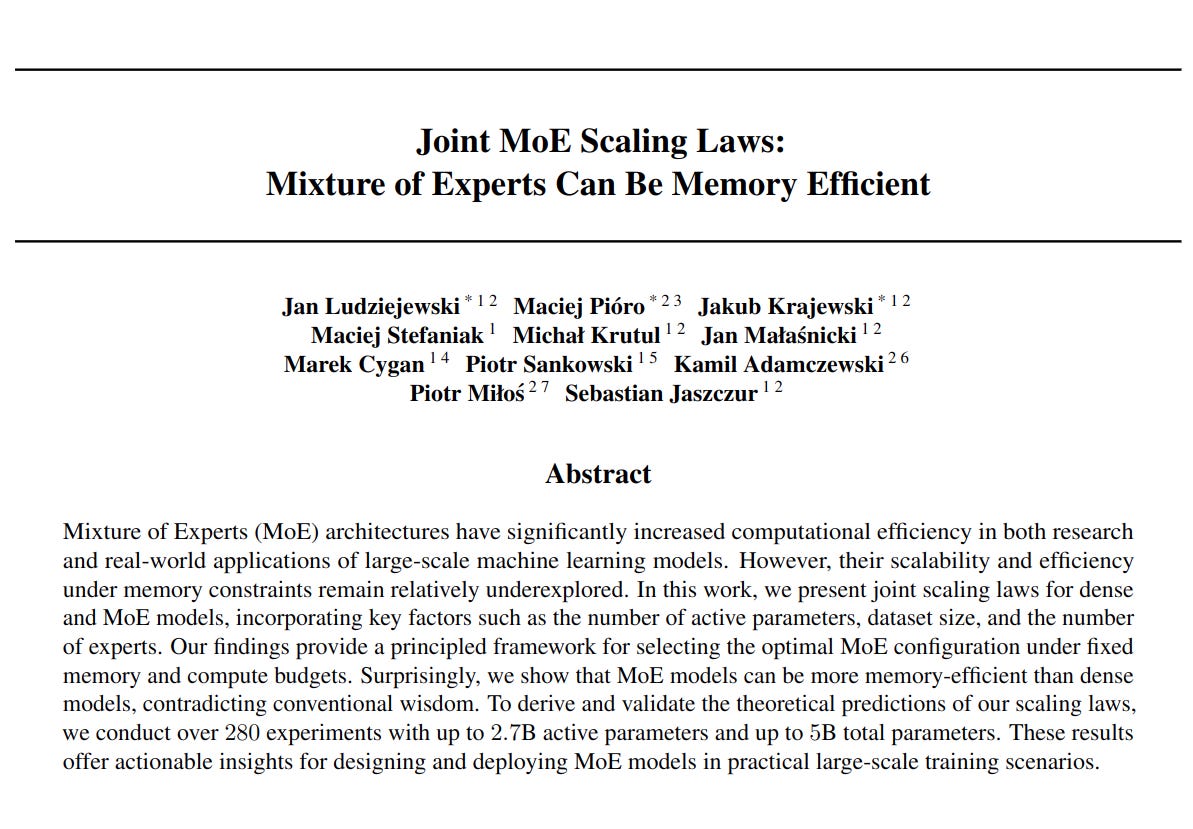"Joint MoE Scaling Laws: Mixture of Experts Can Be Memory Efficient"
Below podcast on this paper is generated with Google's Illuminate.
https://arxiv.org/abs/2502.05172
The challenge lies in the unclear trade-offs between computational and memory efficiency when using Mixture of Experts models compared to dense models, especially under memory limitations. This paper aims to determine if Mixture of Experts models can be optimal within a fixed memory budget.
This paper proposes joint scaling laws for both dense and Mixture of Experts models. The scaling laws incorporate active parameters, dataset size, and the number of experts. This framework rigorously analyzes model performance under memory constraints.
-----
📌 Mixture of Experts models, often deemed memory-heavy, are surprisingly shown to achieve memory optimality under budget constraints, directly challenging common assumptions in scaling.
📌 This paper's joint scaling laws offer a practical, data-driven framework. Engineers can now optimize Mixture of Experts configurations based on memory and compute budgets, moving beyond empirical guesswork.
📌 Quantifying the compute-memory trade-off, the research validates Mixture of Experts as a truly efficient alternative. Mixture of Experts models are not just compute-efficient but also memory-conscious, especially beneficial for inference.
----------
Methods Explored in this Paper 🔧:
→ This paper derives a joint scaling law applicable to both dense Transformer and Mixture of Experts models.
→ The scaling law equation is L(N_act, D, E_hat) = aE_hat^delta * N_act^(alpha + gamma*ln(E_hat)) + bE_hat^omega * D^(beta + zeta*ln(E_hat)) + c.
→ Here L is training loss, N_act is active parameters, D is dataset size, and E_hat is a transformed number of experts.
→ The transformation E_hat is mathematically defined as 1/E_hat = ( (1/E) - (1/E_max) ) / (1 - (1/E_max)) + (1/E_start).
→ The paper validates this scaling law through over 280 experiments with up to 2.7 billion active parameters.
-----
Key Insights 💡:
→ Mixture of Experts models can be more memory-efficient than dense models, achieving the same loss with lower memory usage for a fixed training budget.
→ The optimal number of experts is contingent on specific computational and memory constraints.
→ Increasing the number of experts necessitates a higher token-to-parameter ratio for optimal performance.
→ For a fixed computational budget, increasing the number of experts improves performance when model size and training tokens are appropriately adjusted.
→ Increasing the number of experts in Mixture of Experts models requires a corresponding decrease in the learning rate.
-----
Results 📊:
→ Mixture of Experts models achieve lower loss than dense models of equivalent total parameters and compute budget.
→ Mixture of Experts models exhibit enhanced compute and memory efficiency during inference compared to dense models.
→ For a fixed total parameter count, a Mixture of Experts model with up to 8 experts outperforms a compute-optimal dense model when trained on E times more tokens, while maintaining the same memory footprint.


